Emanuele Usai
Spatio-Temporal Anomaly Detection with Graph Networks for Data Quality Monitoring of the Hadron Calorimeter
Nov 07, 2023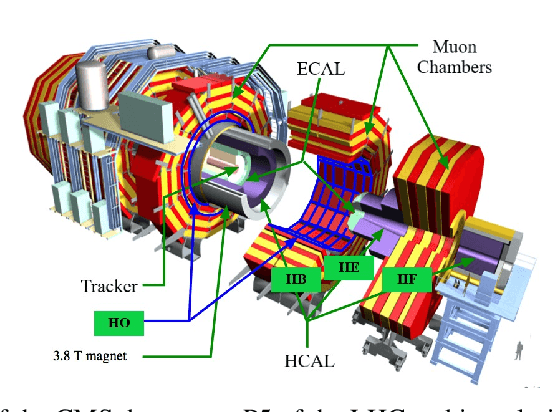
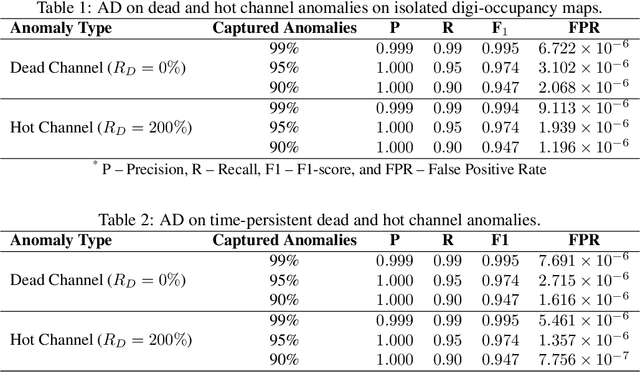
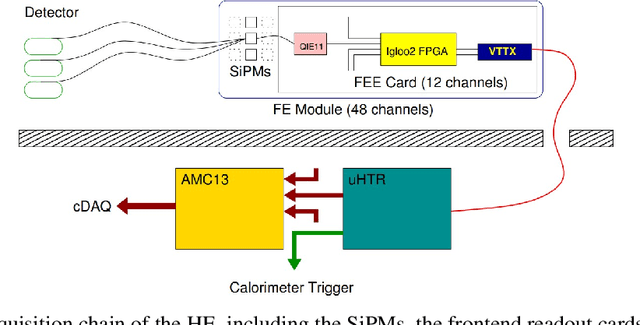
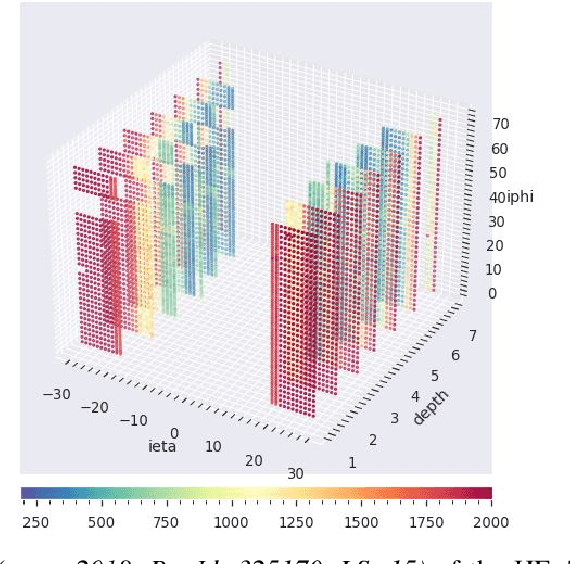
Abstract:The compact muon solenoid (CMS) experiment is a general-purpose detector for high-energy collision at the large hadron collider (LHC) at CERN. It employs an online data quality monitoring (DQM) system to promptly spot and diagnose particle data acquisition problems to avoid data quality loss. In this study, we present semi-supervised spatio-temporal anomaly detection (AD) monitoring for the physics particle reading channels of the hadronic calorimeter (HCAL) of the CMS using three-dimensional digi-occupancy map data of the DQM. We propose the GraphSTAD system, which employs convolutional and graph neural networks to learn local spatial characteristics induced by particles traversing the detector, and global behavior owing to shared backend circuit connections and housing boxes of the channels, respectively. Recurrent neural networks capture the temporal evolution of the extracted spatial features. We have validated the accuracy of the proposed AD system in capturing diverse channel fault types using the LHC Run-2 collision data sets. The GraphSTAD system has achieved production-level accuracy and is being integrated into the CMS core production system--for real-time monitoring of the HCAL. We have also provided a quantitative performance comparison with alternative benchmark models to demonstrate the promising leverage of the presented system.
End-to-End Jet Classification of Quarks and Gluons with the CMS Open Data
Feb 21, 2019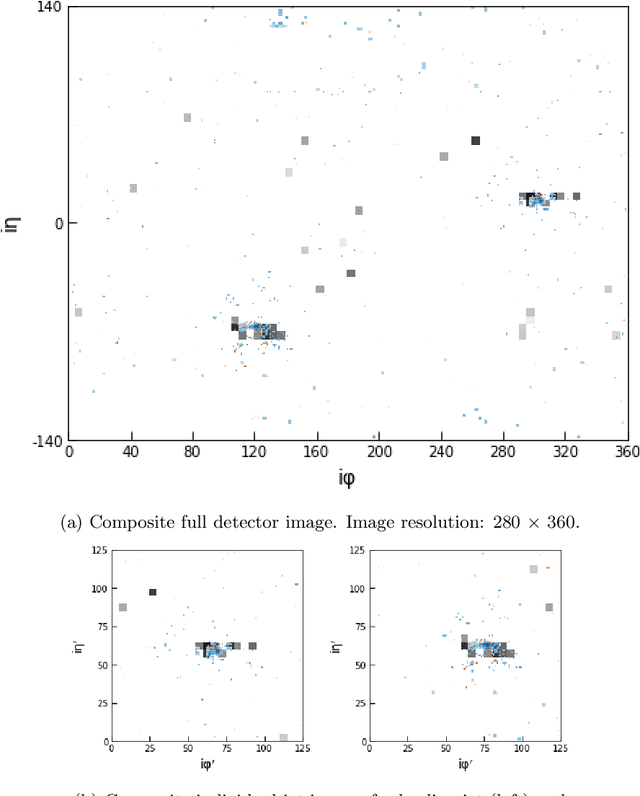
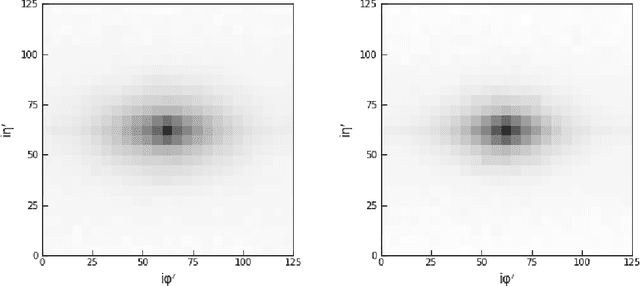
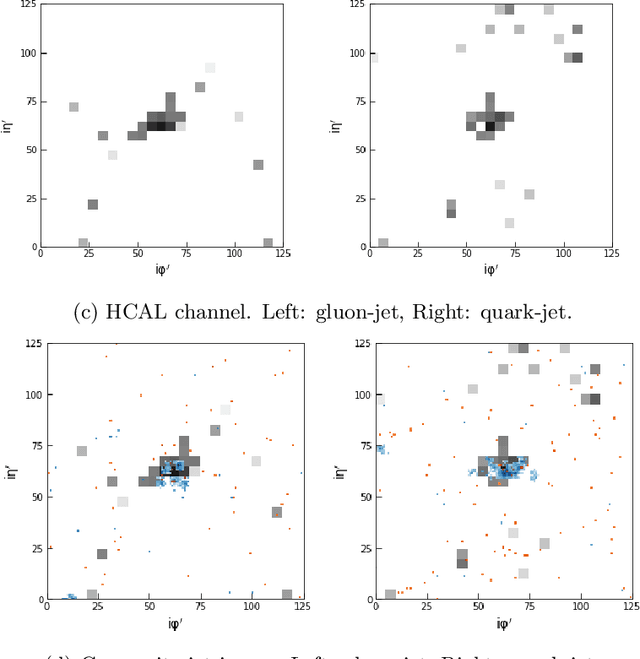
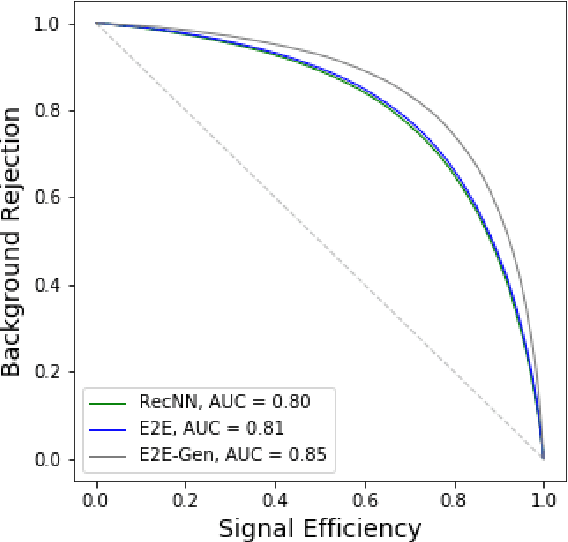
Abstract:We describe the construction of end-to-end jet image classifiers based on simulated low-level detector data to discriminate quark- vs. gluon-initiated jets with high-fidelity simulated CMS Open Data. We highlight the importance of precise spatial information and demonstrate competitive performance to existing state-of-the-art jet classifiers. We further generalize the end-to-end approach to event-level classification of quark vs. gluon di-jet QCD events. We compare the fully end-to-end approach to using hand-engineered features and demonstrate that the end-to-end algorithm is robust against the effects of underlying event and pile-up.
Machine Learning in High Energy Physics Community White Paper
Jul 08, 2018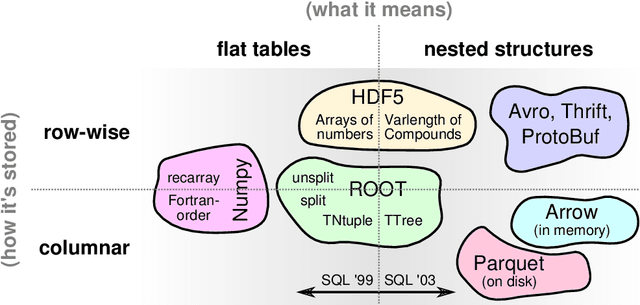
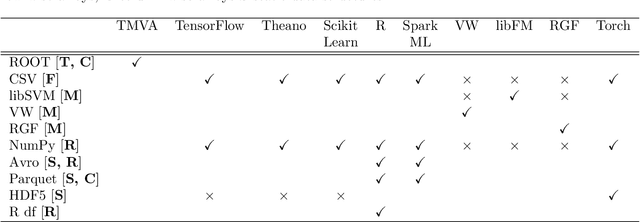

Abstract:Machine learning is an important research area in particle physics, beginning with applications to high-level physics analysis in the 1990s and 2000s, followed by an explosion of applications in particle and event identification and reconstruction in the 2010s. In this document we discuss promising future research and development areas in machine learning in particle physics with a roadmap for their implementation, software and hardware resource requirements, collaborative initiatives with the data science community, academia and industry, and training the particle physics community in data science. The main objective of the document is to connect and motivate these areas of research and development with the physics drivers of the High-Luminosity Large Hadron Collider and future neutrino experiments and identify the resource needs for their implementation. Additionally we identify areas where collaboration with external communities will be of great benefit.
 Add to Chrome
Add to Chrome Add to Firefox
Add to Firefox Add to Edge
Add to Edge